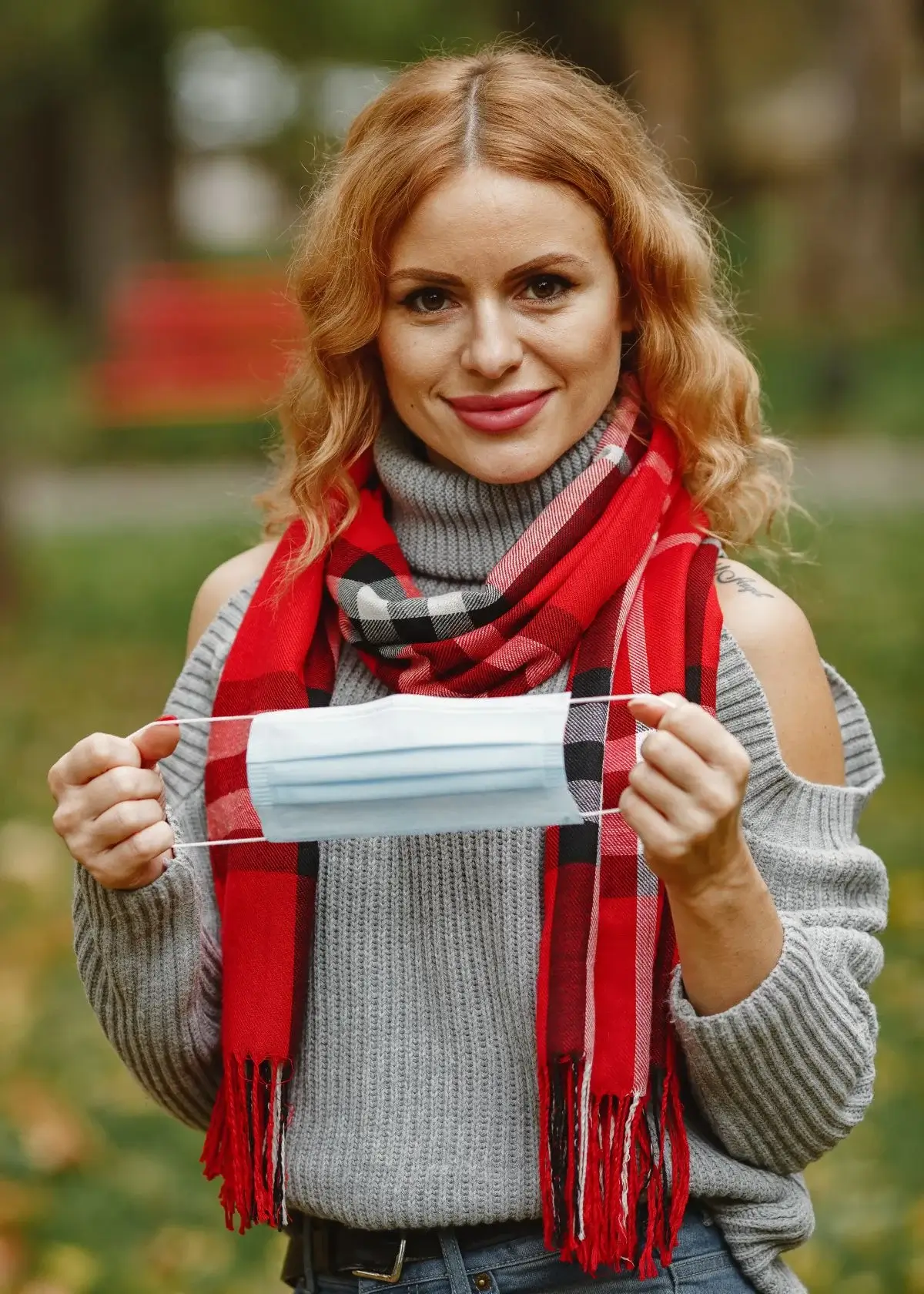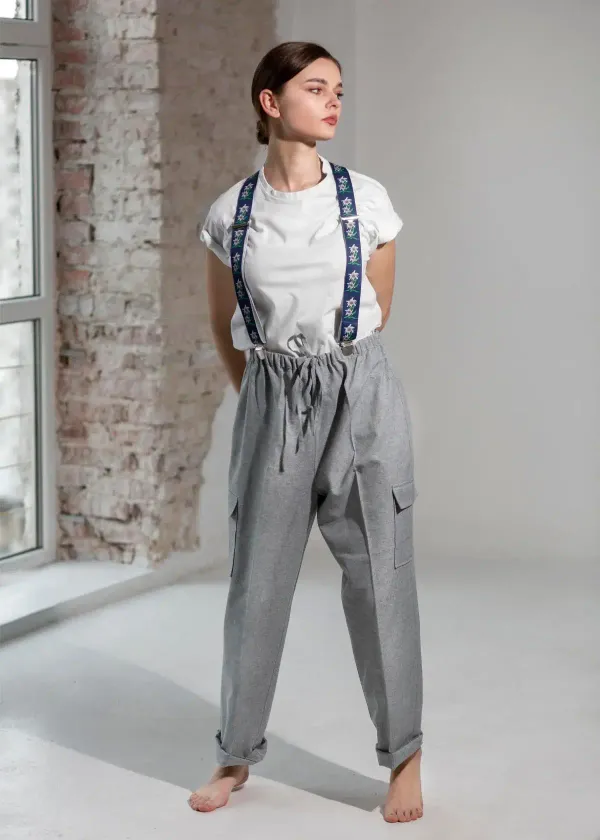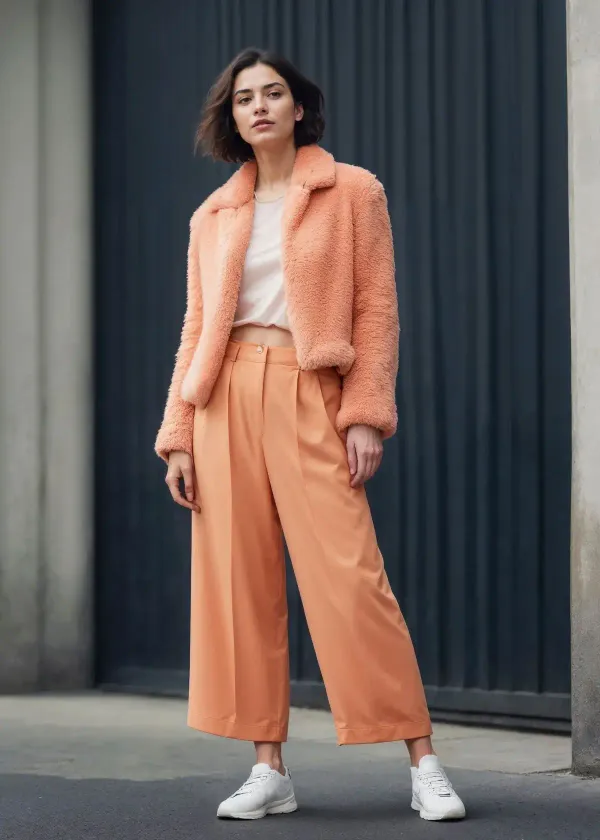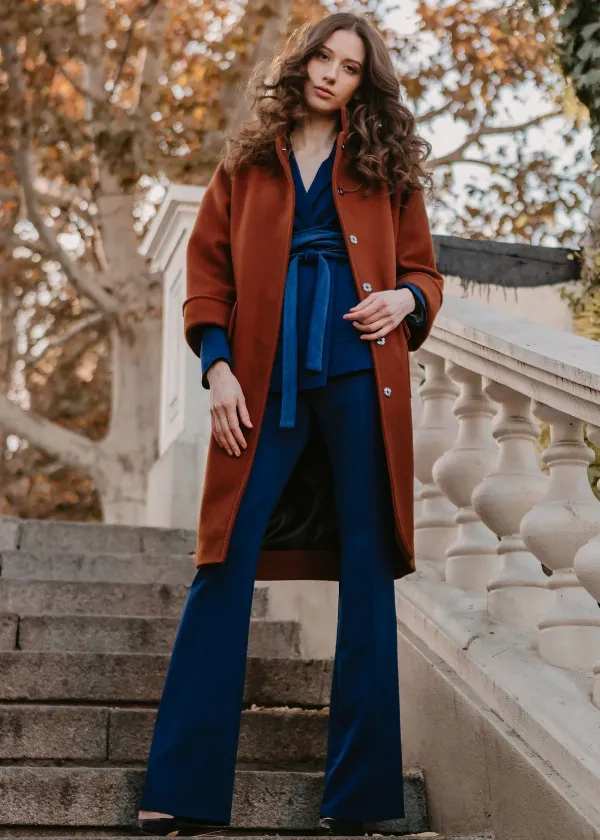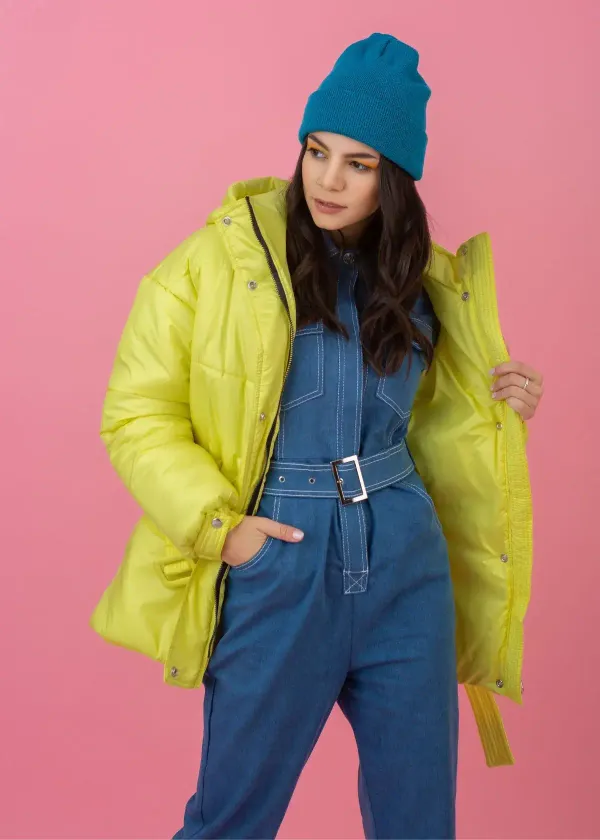Cashmere scarves have long epitomized luxury, but the big question remains: Are these sumptuous wraps a universal delight or a selective indulgence? Whether you're porcelain-fair or deeply bronzed, what you wrap around your neck could be just as critical as what you slip on your body. Here's the downy-low on why Cashmere might be the color wheel's best friend.
The Royal Blend for Sensitive Skin
Cashmere is often celebrated for its cloud-soft texture. This isn't just fluff—pun intended. With a finer gauge than traditional wool, cashmere possesses a smoother, more refined thread that is less prone to causing skin irritation. The coveted fabric is, in fact, hypoallergenic due to the undercoat of cashmere goats, which demonstrates a non-prickly nature that even the most sensitive skin types can appreciate.
For those with eczema or dermatitis, cashmere becomes more than a mere indulgence; it's a gentle and practical choice that won't exacerbate skin conditions. Its thermal-regulatory properties also mean that it isn't just about softness, but about creating a breathable barrier between you and the harsh elements, offering cosy comfort without the itch.
The Spectrum of Elegance
One might be inclined to think that as a luxury material, cashmere could cater predominantly to the lightest skin tones. However, cashmere's natural versatility and sheen are such that they complement a broad spectrum of complexions, from the fairest to the richest. Its luminous quality breathes a subtle warmth into paler complexions, while its varied hues—ranging from soft beiges to deep chocolates—visually pop against darker skin tones.
The key is selecting the right colour. Cooler tones often favour pinks and purples that harmonize with fairer skin, while warmer tones might opt for softer yellows and browns. This is where cashmere becomes an artistic palette; when draped elegantly, it draws attention to the face, enhancing rather than detracting from your natural glow.
The Science of Softness
Understanding the science behind why cashmere feels so delightful can help dispel the myth that it is an exclusive material for the privileged few. Cashmere reigns supreme in terms of the diameter of the fibres, measuring significantly smaller than sheep's wool. This makes cashmere a near miracle for those with sensitive skin, as the finer threads are less likely to cause itchiness or allergic reactions.
Furthermore, its plush feel is not just due to its fineness but also because cashmere comes from the softest underbelly hairs of the cashmere goat. These fibres evolve to protect against the harshest environments, which is a testament to their durability and intrinsic comfort against human skin.
A Warm Hug for All Seasons
In the perennial debate over natural versus synthetic fabrics, cashmere is a renewable choice that is as eco-conscious as it is elegant. It offers a middle ground that is both luxurious and practical, ensuring warmth without the weight. This is particularly pertinent for individuals with specific health needs or comfort requirements.
Cashmere's ability to maintain body temperature without causing overheating makes it a year-round staple. For those undergoing chemotherapy or experiencing menopausal hot flashes, cashmere's breathable warmth can be a gentle source of comfort. As the debate on sustainable fashion grows, cashmere's biodegradability and relatively low environmental impact compared to synthetics cement its status as a responsible luxury.
Cashmere, with its inherent softness, denned by intricate web-to-skin health dynamics and colour-based artistry, is an inclusive indulgence that one can wrap around oneself in complete confidence. From the bedside to the boardroom, it's not just about looking good but feeling good too. Whether you're complementing your skin tone or choosing comfort for exceptional circumstances, cashmere's universal appeal makes it a perennial favourite in any wardrobe.
Following our exhaustive research to identify the paramount Cashmere Scarf, your pursuit for the ultimate accessory culminates here. Click the link to discover your next cherished Cashmere Scarf, meticulously curated to complement your distinctive style. Embrace unparalleled comfort and sophistication with this exquisite piece, crafted to elevate your ensemble. Don't delay; embark on a journey of luxury and refinement with your newfound Cashmere Scarf, destined to become your favourite wardrobe staple.
What distinguishes high-quality cashmere from lower grades?
High-quality cashmere stands out due to its finer fibres, typically measuring below 19 microns in diameter, compared to thicker, coarser fibres found in lower grades. This finer quality results in a fabric that is exceptionally soft, lightweight, and durable. Moreover, high-quality cashmere undergoes rigorous processing, including meticulous combing and sorting, to remove impurities and ensure uniformity. The resulting fabric boasts superior warmth, comfort, and longevity, making it a worthwhile investment for those seeking luxury and durability in their clothing.

What are the different types of cashmere scarf weaves?
Cashmere scarves come in various weave patterns, each offering distinct textures and visual appeal. Among the popular options are plain weave, known for its simplicity and versatility, and twill weave, which features diagonal lines for added interest. Another popular choice is the herringbone weave, characterized by its V-shaped pattern that adds a touch of sophistication to the scarf's design. Each weave style offers a unique aesthetic, allowing wearers to select a scarf that complements their style and preferences.

What colours are popular for cashmere scarves?
Colour preferences for cashmere scarves vary depending on individual tastes and seasonal trends. While classic neutrals such as black, grey, and navy remain perennial favourites for their timeless appeal and versatility, there's also a growing demand for vibrant hues like burgundy, emerald green, and mustard yellow, particularly during the colder months. These bold colours add personality to outfits and elevate even the simplest ensembles. Ultimately, the choice of colour depends on personal style, wardrobe needs, and the desired aesthetic impact.
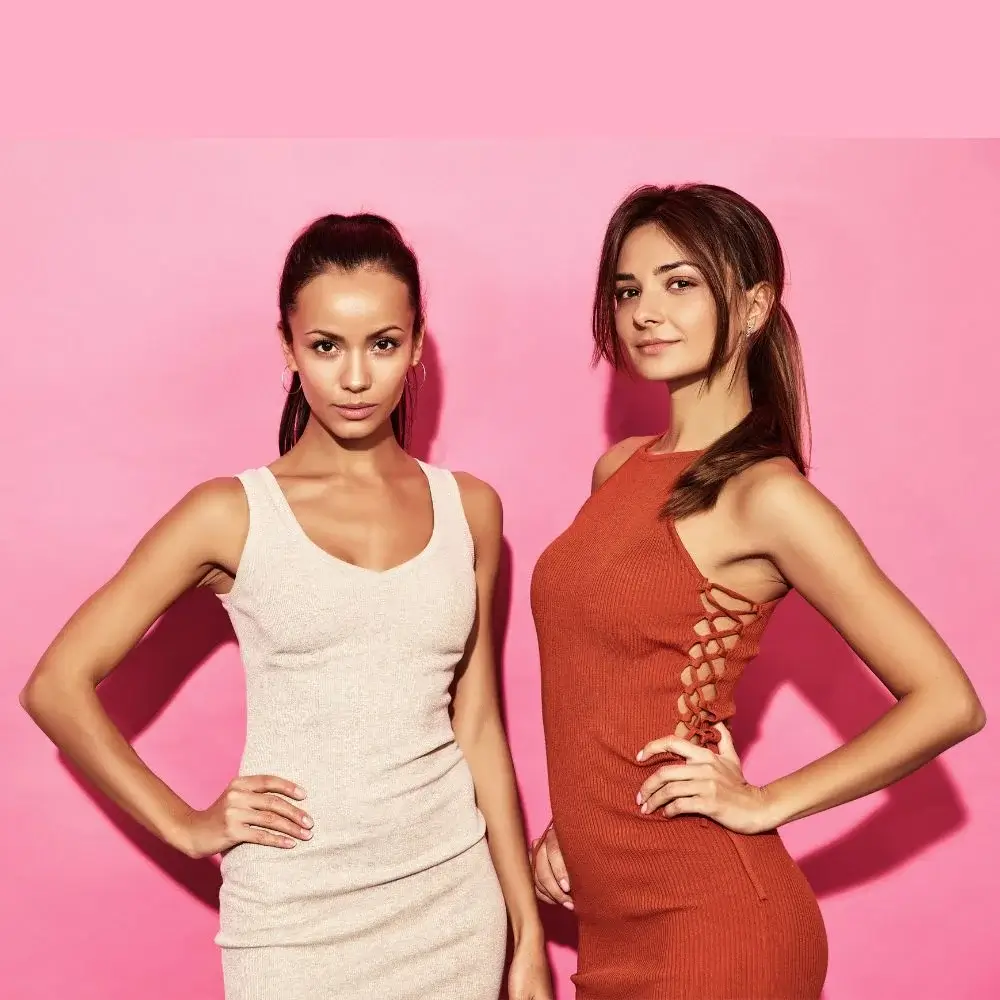
How can I tie a cashmere scarf in different styles?
Tying a cashmere scarf in various styles offers versatility and allows wearers to customize their look based on their preferences and the occasion. Popular tying techniques include the Parisian knot, which creates an elegant and streamlined appearance, and the classic drape, ideal for effortless sophistication. The knotted loop and infinity loop styles also offer style and functionality, providing extra warmth while adding visual interest to the outfit. Experimenting with different tying methods allows individuals to express their style and adapt their scarf to various weather conditions and clothing ensembles.
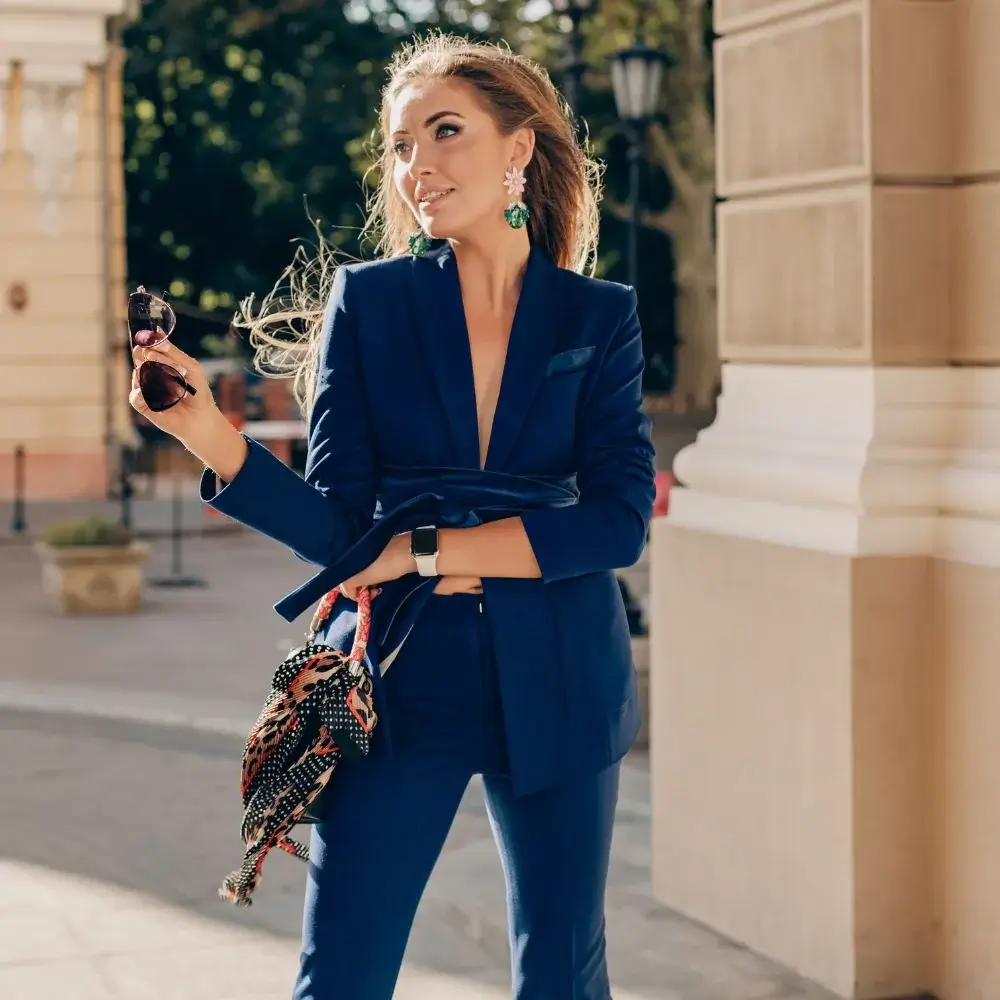
How should I store my cashmere scarf during the off-season?
Proper storage is essential for preserving the quality and condition of cashmere scarves during the off-season. Opt for a breathable storage container or garment bag to protect the scarf from dust, moisture, and pests while allowing air circulation. Store the scarf in a cool, dry place away from direct sunlight to prevent fading and discolouration. Avoid hanging cashmere scarves, as this can stretch and distort the fabric. Following these storage guidelines, you can ensure that your cashmere scarf remains pristine and ready to wear when the weather turns colder again.
Should I invest in a blended cashmere scarf or pure cashmere?
The decision to invest in a blended or pure cashmere scarf depends on individual preferences, budget constraints, and intended use. Blended cashmere scarves combine cashmere with other fibres, such as silk or wool, offering enhanced durability and affordability while retaining the luxurious feel of cashmere. These scarves are well-suited for everyday wear and may withstand frequent use and washing. Conversely, pure cashmere scarves provide unparalleled softness, warmth, and luxury, making them an ideal choice for those seeking quality and comfort. Consider your priorities and lifestyle factors when selecting the best option.


